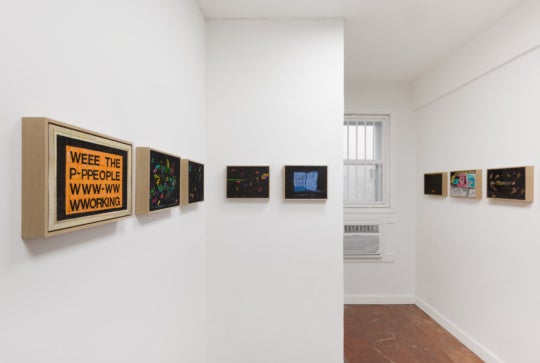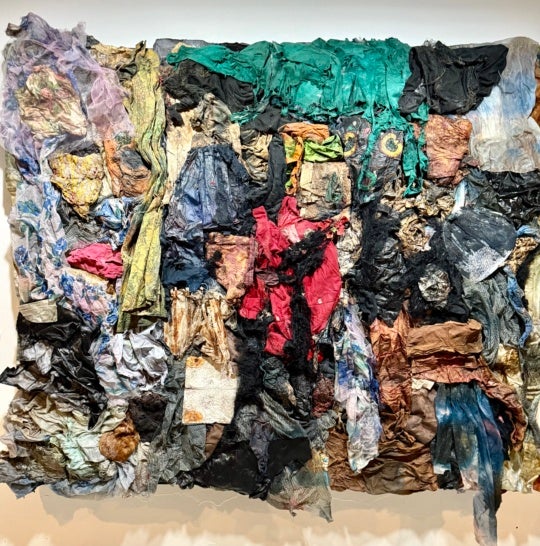
In Beth Lilly’s photograph The story is trying to tell the story, someone holds a scribbled note up to the camera. As the fractured thought of a past epiphany, the note reveals that—for Lilly—stories are autonomous, and similar to time, they operate beyond our control by continuously evolving. Together the image and the handwritten footnote provide a glimpse into her thought process and the personal archives of letters and journals that she holds dear. At Hagedorn Foundation Gallery, Lilly’s solo exhibition, Every single one of these stories is true, pivots around the centrality and power of language.
Grouped to construct narrative themes, 30 photographs weave together stories from her childhood and family history, dreams, and exploration. Together they recount the baggage, magic, and naiveté of growing up, as well as the indistinct boundary between objective reality and the fictional qualities of the subjective perspective. In this gray area Lilly explores the occult, relishing in her ability to gain the audience’s confidence and exercising her artistic freedom to play with the distinction between trust and truth. Lilly depicts a world with family ghosts and skeletons, where dreams and visions with varying degrees of whimsy and terror have manifested in real life. Within this landscape, the artist shares how the inescapable murkiness can look when stories of the past continue to inform one’s self.

The images stage, reenact, and rehearse memories dredged from Lilly’s imagination, confronting the viewer with the extent of their authenticity. Each photograph challenges the limitation of time, jumbling the historical nature of the story with the contemporary image. Disrupting the conventional narrative, Lilly visualizes the same characters in her stories with different models. Despite the discrepancies, viewers are encouraged to trust that the stories are true, even if the documentation is not real. The inextricable connection between the image and text bounds the artist and audience in a relationship that more closely approximates the intimacy created between narrator and reader. Based on the camera’s placement to capture each scene, a viewer can oscillate between being inside and outside of Lilly’s immersive yet fabricated fish bowl, moving between first- and third-person accounts.
While the work in the show is unafraid to move freely through time and perspective, the organization of the exhibition perhaps adheres too much to logic. By applying the title above the “beginning” of each series, the gallery text attempts too much control over how visitors should move through the space, instead of reveling in the freedom to swim around in the artist’s psyche.

The series Escaped Convicts exemplifies the unique interpretations afforded with hindsight, and its ability to jump through time. In the series, the artist describes her brother’s crime and imprisonment as well as a later encounter with escaped convicts posing as hitchhikers. The orange boots at center of the narrative generate complex yet distinct emotions when reversing or fast-forwarding through her memories. Demonstrating more accurately the way we sift through the past, the same series opens to endless interpretations depending on how a story unfolds. It is here that we find the hand-scribbled note mentioned at the beginning of this article, reminding us that stories are not static but malleable forms.
Throughout the exhibition, Lilly asks to be considered a reliable narrator. With her title’s assertion that “every single one of these stories is true,” the accounts collectively reflect the beauty, mystery, and messiness of life. By mining various components of her past, the exhibition also encourages us as viewers to reflect upon the construction of our own narratives.




